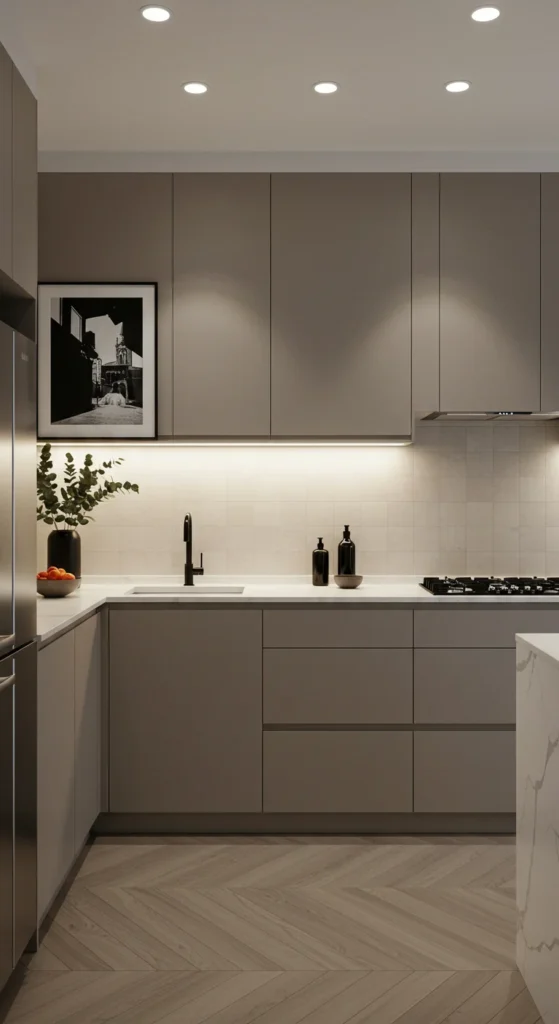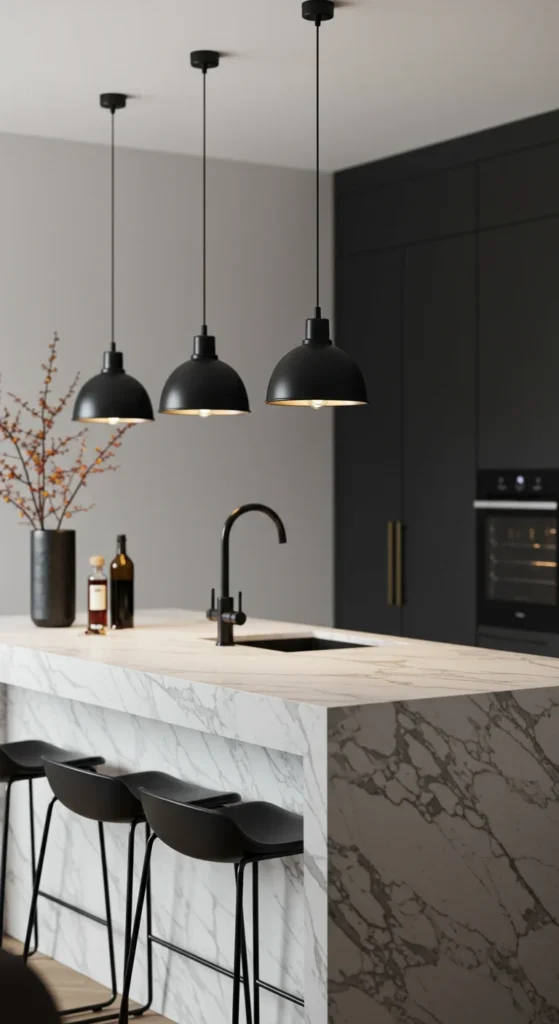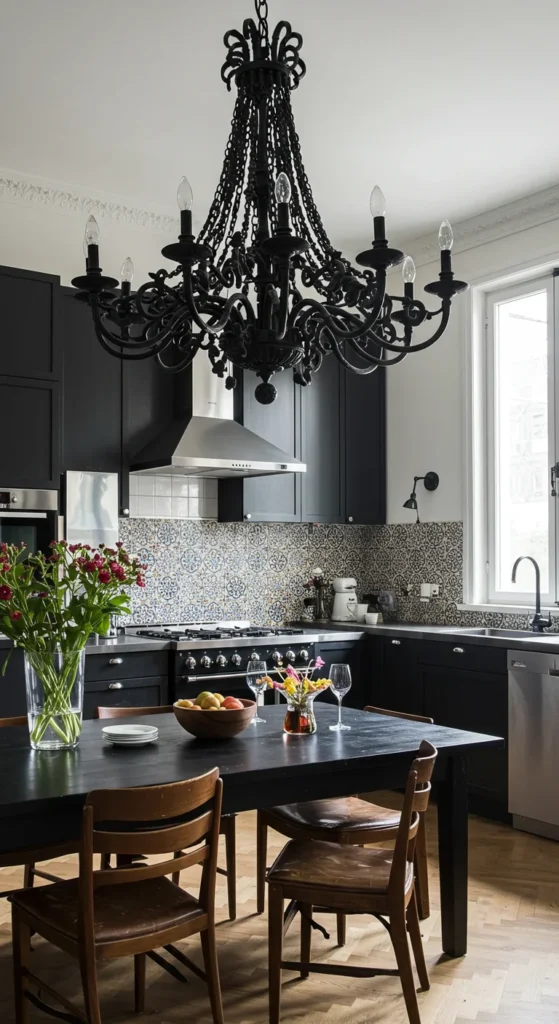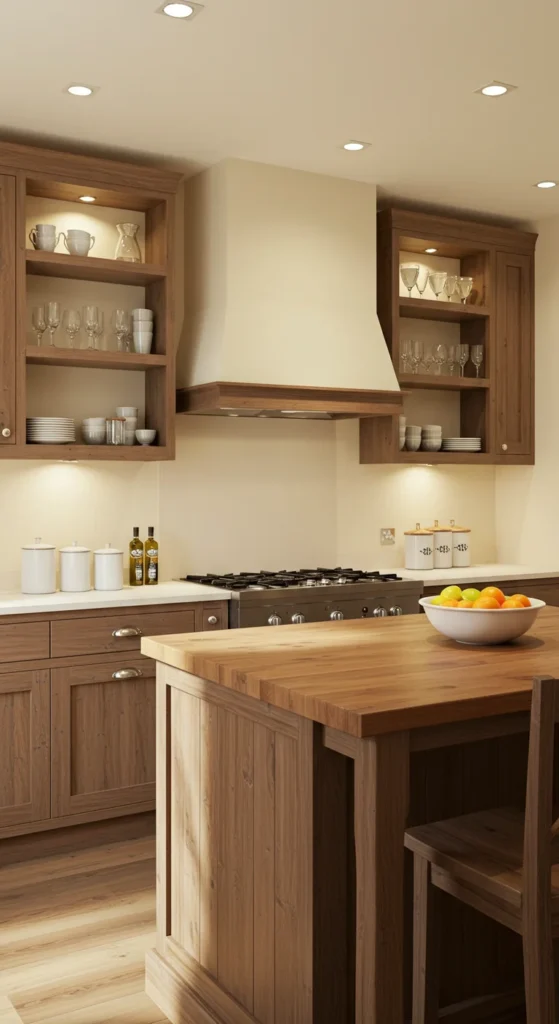When you think about redesigning your kitchen, the focus often gravitates to cabinetry, countertops, and appliances. However, one of the most transformative elements—kitchen lighting—deserves your attention too! The right lighting not only enhances functionality but can elevate your kitchen’s style to new heights. Let’s explore 7 kitchen lighting design ideas that blend both functionality and aesthetic appeal.
1. Layered Lighting: A Balanced Approach

Layered lighting is a design strategy that combines three types of lighting: ambient, task, and accent. Each layer plays a critical role.
Ambient Lighting: This is the foundational light in your kitchen. Think of it as sunlight streaming through a window. Ceiling-mounted fixtures or flush mounts can provide excellent ambient illumination.
Task Lighting: Focusing on areas where you perform specific tasks—like above the sink or countertops—task lighting can be achieved using under-cabinet lights or pendant lights over an island.
Accent Lighting: This adds drama and highlights specific features, such as artwork or decorative shelving. Accent lighting includes spotlights or wall sconces.
Tip: Don’t overlook dimmers! Dimmers let you adjust the brightness according to the time of day or mood, making your kitchen versatile for cooking or entertaining.
2. Pendant Lighting: Chic and Practical

If you want to add style while ensuring adequate task lighting, pendant lights are the way to go. Hanging above an island or dining area, these fixtures can act as a focal point.
Choosing the Right Pendant Lights
Size Matters: Ensure that the size of the pendants aligns with the scale of your kitchen. A large, bold pendant can make a statement in a spacious area, while smaller ones are ideal for cozy nooks.
Material and Finish: Metal, glass, or even textile-covered pendants can blend perfectly with your kitchen style. Consider the existing color schemes and textures when selecting materials.
Height Considerations: Suspend the lights at an appropriate height—about 30-36 inches above surfaces like islands—to avoid obstruction while maximizing illumination.
Example: A cluster of varying heights can create a whimsical touch while providing ample light for cooking and dining.
3. Under-Cabinet Lighting: Brightening Up the Details

Under-cabinet lighting is often underappreciated, yet it’s vital for illuminating work surfaces without creating harsh shadows.
Types of Under-Cabinet Lighting
LED Strips: These flexible and energy-efficient strips can be easily installed and provide a soft glow.
Puck Lights: Round fixtures that use a focused beam can be placed strategically to highlight specific areas.
Hardwired Fixtures: For a more seamless look, consider installing recessed lights under your cabinets that can be connected to your home’s electrical system.
Benefit: Under-cabinet lighting not only serves practicality by making food preparation tasks easier but also adds depth and dimension to your kitchen’s overall design.
4. Statement Fixtures: Make a Bold Impression

If you want your kitchen to reflect your personality, consider incorporating statement fixtures. These lights serve dual purposes: they’re functional and can act as a sculptural element that captivates attention.
Selecting Statement Fixtures
Size and Scale: Ensure your statement fixture isn’t too overpowering or too small for the space it occupies.
Style Alignment: Match the light fixture’s style with your kitchen’s theme—be it modern, rustic, or industrial.
Finish and Color: Brass, black, or colored finishes can either complement or contrast existing appliances and hardware for a cohesive look.
Example: A vintage chandelier can add elegance to a modern farmhouse kitchen, blending old-world charm with contemporary aesthetics.
5. Natural Light Maximization: Embrace the Sunshine

There’s no substitute for natural light, and maximizing it can dramatically alter the ambiance of your kitchen.
Techniques for Maximizing Natural Light
Use Reflective Surfaces: Mirrors or glossy finishes on cabinets can help bounce light around the room.
Select Light Color Palettes: Light, soft paint colors can help reflect natural light, making the space feel larger and more open.
Window Treatments: Opt for sheer curtains or blinds that can filter, rather than block, light.
Tip: Consider enlarging windows or adding skylights during remodels if you find that your kitchen doesn’t receive enough natural light.
6. Smart Lighting: The Future is Now

Integrating smart lighting into your kitchen design can enhance efficiency while providing flexibility.
Benefits of Smart Lighting
Automation: Schedule lights to turn on and off based on your cooking or entertaining routine.
Control Options: Use your smartphone or voice commands to adjust brightness levels or change colors.
Energy Efficiency: Smart bulbs typically consume less energy, lowering utility costs.
Example: Imagine being able to dim your kitchen lights for a cozy dinner setting with just a command—smart lighting makes this possible!
7. Accent Lighting: Subtle Yet Effective

Accent lighting adds warmth and style to your kitchen. It can draw attention to architectural elements and create visual interest.
Implementing Accent Lighting
Recessed Lighting: Hidden in the ceiling, recessed lights are a great way to illuminate specific areas without taking up visual space.
Display Lighting: Use spotlights in glass cabinets or on shelves to showcase your favorite dishware or culinary books.
Task-Specific Fixtures: Consider placing a small lamp on your kitchen island for a cozy, layered lighting effect.
Tip: The key to effective accent lighting is ensuring it’s versatile yet subtle, enhancing rather than overpowering the overall lighting scheme.
Designing the perfect kitchen lighting scheme can significantly enhance functionality while reflecting your unique style. Whether you choose to layer your lights, install chic pendants, or maximize natural light, each of these design ideas plays a pivotal role in creating a welcoming atmosphere.
Investing time and thought into your kitchen’s lighting will pay off greatly, making cooking and entertaining more enjoyable while providing a stunning backdrop for daily life. So go ahead—experiment with these 7 kitchen lighting design ideas and watch your kitchen transform into a beautifully functional space!
By following the strategies outlined above, you can create a kitchen lighting design that looks great and serves your lifestyle’s practical needs. Whether you are renovating or simply refreshing your space, these ideas will help light your way!
